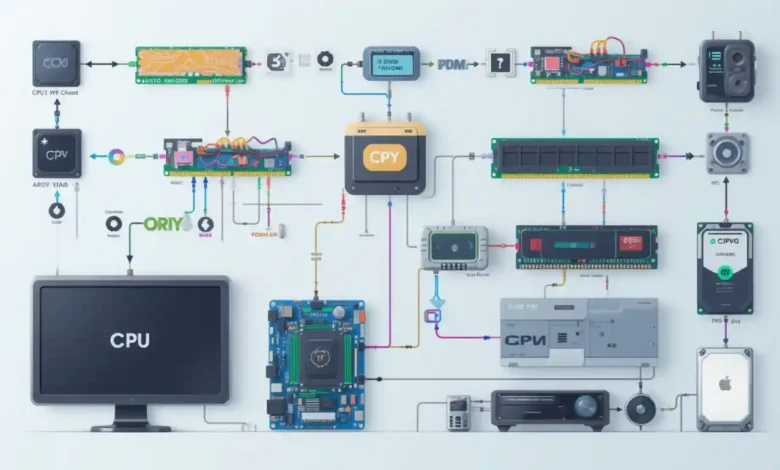Unraveling the Complexity: A Comprehensive Guide to Computer Diagrams

Introduction:
In the realm of technology, understanding the intricate mechanisms that power computers is paramount. At the heart of this understanding lies the computer diagram, a visual representation that elucidates the complex interplay of hardware and software components. In this guide, we delve deep into the world of computer diagrams, exploring their significance, types, creation process, and much more.
Importance of Computer Diagrams:
Computer diagrams serve as invaluable tools for both novices and experts alike, offering a visual roadmap to comprehend the intricate architecture of computing systems. Whether it’s deciphering hardware configurations or elucidating software interactions, these diagrams provide clarity amidst complexity.
Types of Computer Diagrams:
From system architecture diagrams to flowcharts and UML diagrams, the spectrum of computer diagrams is vast and diverse. Each type serves a specific purpose, offering unique insights into different facets of computer systems.
Creating Computer Diagrams:
The process of crafting computer diagrams involves meticulous planning, design, and implementation. Utilizing specialized software tools, designers meticulously map out the intricate connections and components that constitute a computing system.
Hardware Components:
Computer diagrams elucidate the intricate network of hardware components, ranging from central processing units (CPUs) and memory modules to input/output devices and storage units. By visualizing these components, users gain a deeper understanding of hardware functionality and interconnectivity.
Exploring Software Interactions:
In addition to hardware, computer diagrams also shed light on the complex interactions within software systems. Flowcharts and sequence diagrams, for instance, elucidate the sequential flow of program execution, facilitating software development and debugging processes.
Real-World Applications:
Computer diagrams find applications across diverse domains, from computer engineering and software development to network administration and system troubleshooting. In each context, these visual aids serve as indispensable tools for analysis, design, and optimization.
Challenges and Considerations:
Despite their utility, creating accurate and comprehensive computer diagrams poses several challenges. Ensuring consistency, scalability, and relevance amidst evolving technologies requires careful consideration and continuous refinement.
Future Trends:
As technology evolves, so too will the landscape of computer diagrams. Emerging trends such as virtualization, cloud computing, and quantum computing will necessitate novel approaches to diagramming, reflecting the dynamic nature of the digital era.
Leveraging Tools and Resources:
A plethora of software tools and online resources exist to aid in the creation and interpretation of computer diagrams. From industry-standard applications to open-source platforms and educational tutorials, these resources empower users to harness the full potential of visual representation.
The Evolution of Understanding:
In conclusion, computer diagrams stand as a testament to humanity’s ongoing quest to unravel the mysteries of technology. As our understanding evolves and technology advances, these visual artifacts will continue to serve as indispensable tools in navigating the ever-changing landscape of computing.
Conclusion:
In the intricate tapestry of technology, computer diagrams emerge as beacons of clarity, illuminating the complex interplay of hardware and software components. From their humble origins to their indispensable role in modern computing, these visual representations epitomize the power of visualization in understanding and harnessing the potential of technology.
FAQs:
- What is a computer diagram?
A computer diagram is a visual representation that illustrates the architecture, components, and interactions within a computing system.
- How are computer diagrams created?
Computer diagrams are typically created using specialized software tools that allow designers to map out the intricate connections and components of a computing system.
- What are the different types of computer diagrams?
Computer diagrams encompass various types, including system architecture diagrams, flowcharts, UML diagrams, and more, each serving distinct purposes in visualizing different aspects of computing systems.
- What is the importance of computer diagrams?
Computer diagrams play a crucial role in helping users understand the complex interplay of hardware and software components within computing systems, providing clarity amidst complexity.
- How are computer diagrams evolving with advancing technology?
As technology evolves, so too do computer diagrams, reflecting emerging trends such as virtualization, cloud computing, and quantum computing. Adapting to these changes, computer diagrams continue to serve as indispensable tools in navigating the dynamic landscape of computing.




